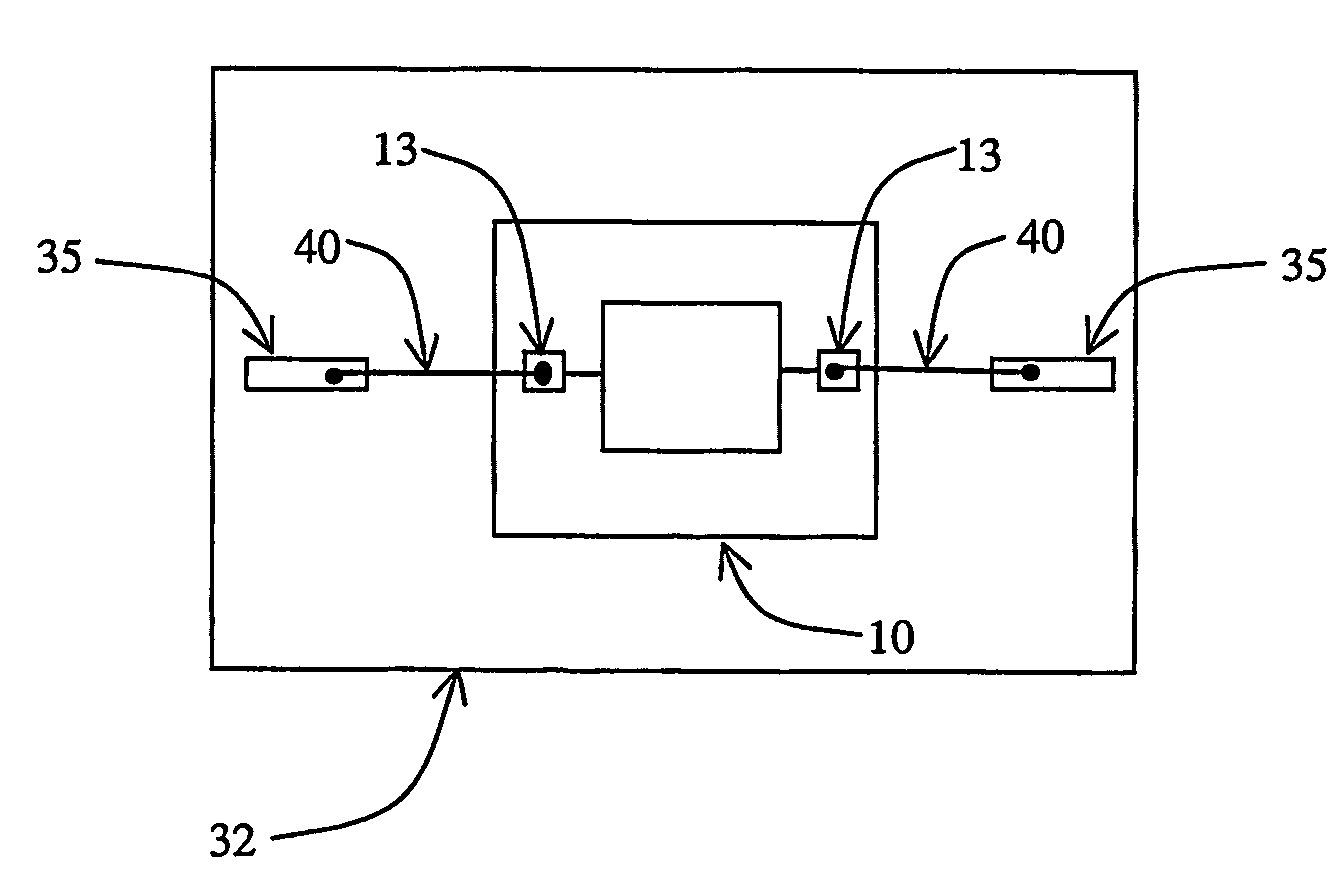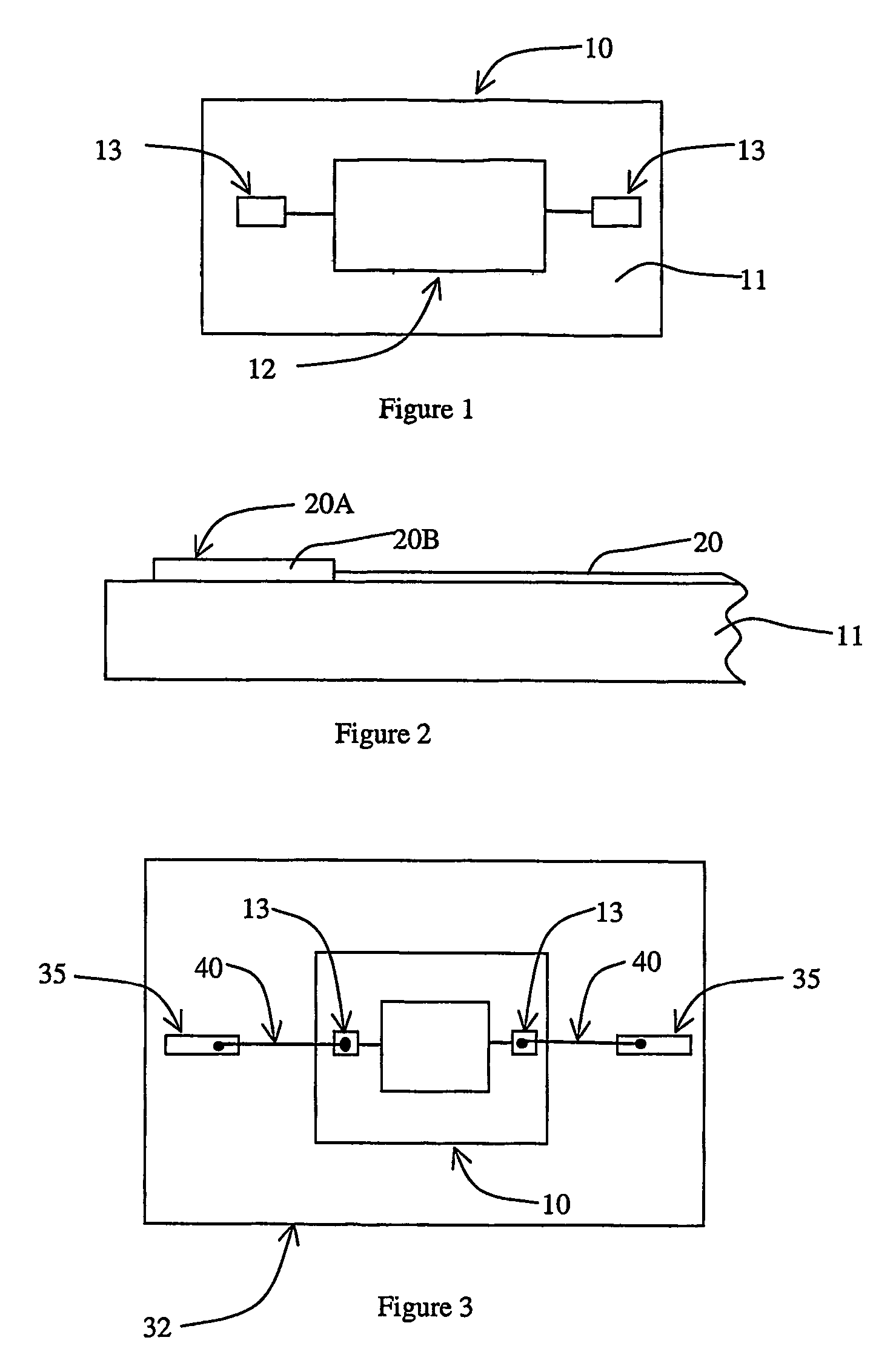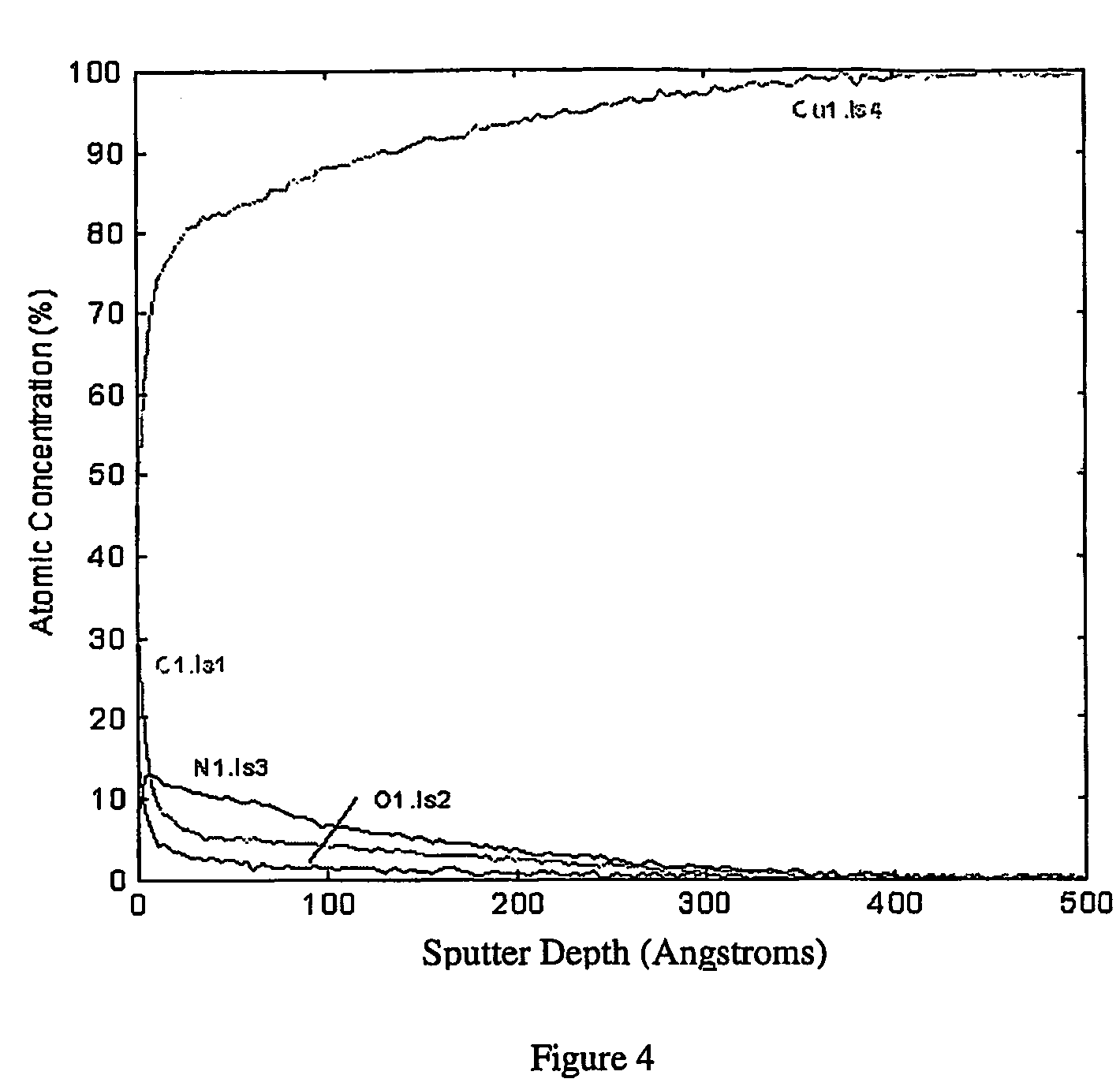Electrical interconnect structures for integrated circuits and methods of manufacturing the same
a technology of electrical interconnection and integrated circuit, which is applied in the direction of manufacturing tools, contact member manufacturing, and welding apparatus, etc., and can solve the problem of recognizing that cu(n) is also relatively unstabl
- Summary
- Abstract
- Description
- Claims
- Application Information
AI Technical Summary
Benefits of technology
Problems solved by technology
Method used
Image
Examples
example 1
[0037]A silicon die comprising a substrate and a conductive copper layer, of the general type illustrated in FIG. 2, is provided. The conductive copper layer is 10,000 Angstroms and forms the base for a bond pad on the die. A protective surface is formed on the bond pad by first pre-treating the bonding surface with a gaseous composition consisting of about 95 mole % nitrogen (N2) and 5 mole % of hydrogen (H2). The surface is exposed to this first pre-treating gas at a temperature of about 400° C. for about nine (9) hours to produce a bonding surface that is substantially free of copper oxide. The bonding surface is then exposed to a second pre-treating step by exposure to a gaseous composition consisting essentially of oxygen (O2) at a temperature of about 200° C. for about five (5) minutes to produce a copper oxide layer with a well-controlled thickness. The oxide layer is then treated with anhydrous ammonia for 5 hours at about 275° C. to produce a substantially non-conductive su...
example 2
[0038]Copper nitride is deposited onto a quarter of an 8-inch silicon wafer with a uniform 1 micron thick copper coating by radio-frequency sputtering of a copper target in an atmosphere of approximately 4 mtorr nitrogen. A 200 Angstrom deposit is produced at a sputtering rate of approximately 33 Angstrom per minute. During the process, the wafer is heated to 100° C. FIG. 5 shows a Auger depth profile of the elemental composition. The Auger data clearly indicates a copper nitride coating with a thickness of about 200 Angstrom. The silicon and oxygen are most likely contaminants present on the wafer before the experiment.
example 3
[0039]Copper nitride is deposited by a vacuum deposition technique as follows. Helium gas at a pressure of approximately 1 atmosphere pressure is passed through a nozzle situated approximately 10 cm above a copper-coated silicon wafer in a vacuum chamber. The substrate is heated to approximately 120° C. An electric discharge between an anode and a copper hollow cathode sputtering target inside the nozzle introduce copper atoms and ions into the helium. Nitrogen gas is introduced below the nozzle to produce a background pressure of approximately 30 mtorr of nitrogen. The interaction of the copper atoms or ions with the nitrogen causes the deposition of copper nitride on the surface. FIG. 6 shows an Auger elemental depth profile for the sample produced in this experiment. The depth profile demonstrates the formation of a surface layer of copper nitride with a thickness of about 50 Angstroms on the copper-coated wafer. The oxygen seen at a greater depth is the copper oxide that existed...
PUM
| Property | Measurement | Unit |
|---|---|---|
| temperatures | aaaaa | aaaaa |
| temperature | aaaaa | aaaaa |
| temperature | aaaaa | aaaaa |
Abstract
Description
Claims
Application Information
 Login to View More
Login to View More - R&D
- Intellectual Property
- Life Sciences
- Materials
- Tech Scout
- Unparalleled Data Quality
- Higher Quality Content
- 60% Fewer Hallucinations
Browse by: Latest US Patents, China's latest patents, Technical Efficacy Thesaurus, Application Domain, Technology Topic, Popular Technical Reports.
© 2025 PatSnap. All rights reserved.Legal|Privacy policy|Modern Slavery Act Transparency Statement|Sitemap|About US| Contact US: help@patsnap.com



